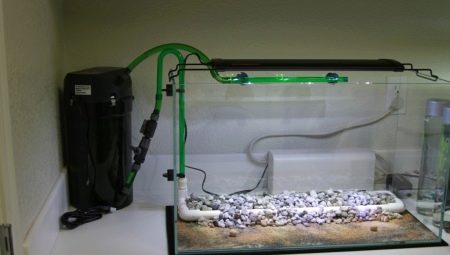Without constant purification of water in the aquarium, it is impossible to create ideal conditions for keeping fish. One way to do this is to use a biological filter. It effectively removes hazardous nitrates and toxins from the environment from the decomposition of feed or plants. Such a filter is considered the safest option that does not contain chemical compounds.
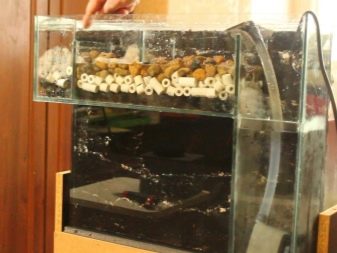

Device and principle of operation
Aquarium biofilter is the latest filtration system with a unique water purification system. The basic principle of operation is to pass a stream through a layer of living bacteria of certain species. They participate in nitrification - the removal of nitrates, which are formed during the decay of organic substances, plant debris and food.
Numerous studies have shown that when cleaning the aquarium, bacteria can perfectly regulate the level of oxygen, maintain a balance of nutrients. But to process a large volume requires a large area on which microorganisms are located. In natural reservoirs, the role of such "farms" is performed by pitfalls, plants and algae. At home, you can use special biofilters containing live microflora.

The biofiltration system consists of two parts.
- water pump - pumps water at a certain speed, passing it through several layers of different fillers and materials.
- Capacity or layer of substance - here beneficial bacteria actively multiply.
In more modern models, there are additional membranes that trap debris particles, the remains of algae and plants, large particles of muddy suspension.
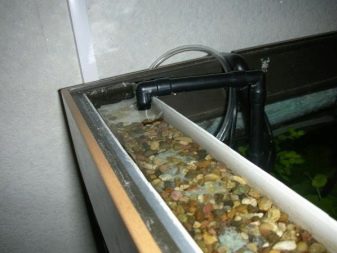

Advantages and disadvantages
Many professional aquarists use biofilters to process their own aquarium collections and value them for a number of advantages.
- Biofiltration is characterized by low cost.
- There is the possibility of manufacturing at home.
- The system does not harm the inhabitants of the aquarium, does not change the chemical composition of the water. With constant use, algae develops better, there is less pest of fish from a lack of oxygen.
- The biological filter helps to clean the aquarium less often, which reduces the time spent on servicing large containers.
The disadvantages of the cleaning system include the need to select a high aquarium: the filter located at the bottom reduces the usable volume, leaving the fish less free space.
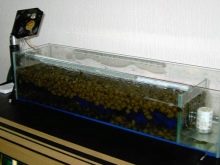
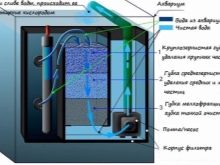
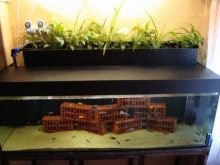
Varieties
A simpler system is an internal biofilter for water. It looks in two versions.
- Special ballsnecessary for the settlement of beneficial bacteria are placed in a container with a large number of holes. It is laid on the bottom of the aquarium or fixed on one side. It can be decorated with algae, hidden behind the decoration.
- Plate of selected material placed under a thin layer of sand, forming a false bottom. Pump tubes are started under it and a stream of water is supplied. Professionals call the Rugf (reverse current) system.
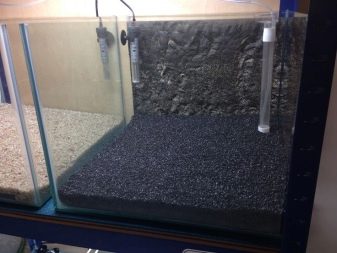
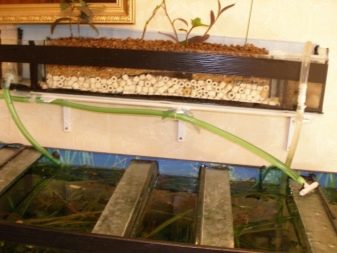
The latter method is less popular. The plate prevents algae from taking root, and if necessary, you have to get all the ornaments and decor. Its maintenance requires more powerful pumps, which affects the cost of cleaning. Sometimes in the water there is a layer of suspension from the bottom, which makes the water cloudy.
A more advanced biological treatment system is external (canister). The filter does not fit into the water, but remains on the outside. It is large in size and contains several layers of various materials.
They serve as a medium for the growth of bacteria. The pump takes part of the water from the aquarium, drives it through the structure and returns back, enriching it with oxygen.
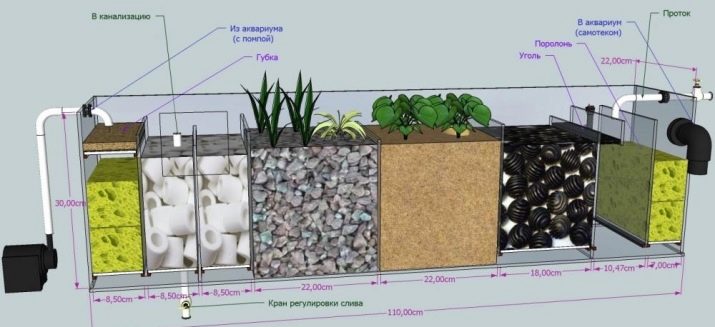
Filler Options
For the settlement of bacterial colonies, a safe base is needed, which can be used as one of the selected materials.
- Synthetic winterizer. The most budget option of synthetic fibers. Ideal for colonization with microflora, but slightly retains solid particles and residues of feed. Recommended for small containers with a volume of several liters.
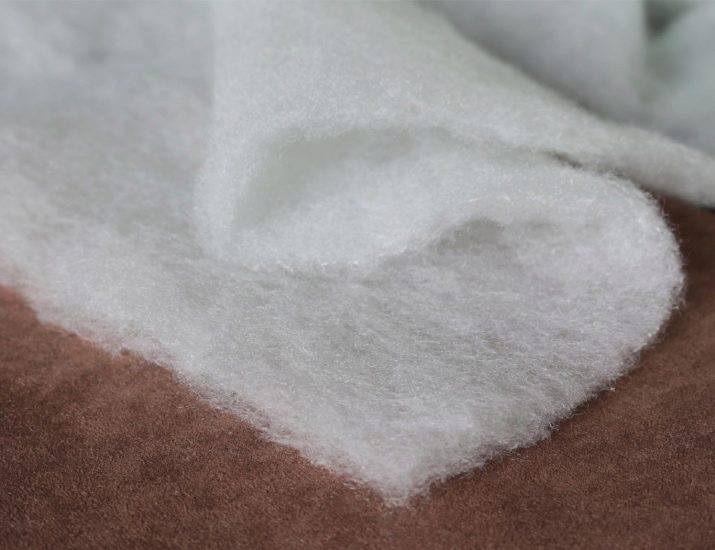
- Foam sponge. Well filters sludge and other impurities, suitable for the settlement of bacteria. But it requires frequent cleaning, as it clogs very quickly. When washing the microflora dies and the process of growing colonies has to be repeated again.
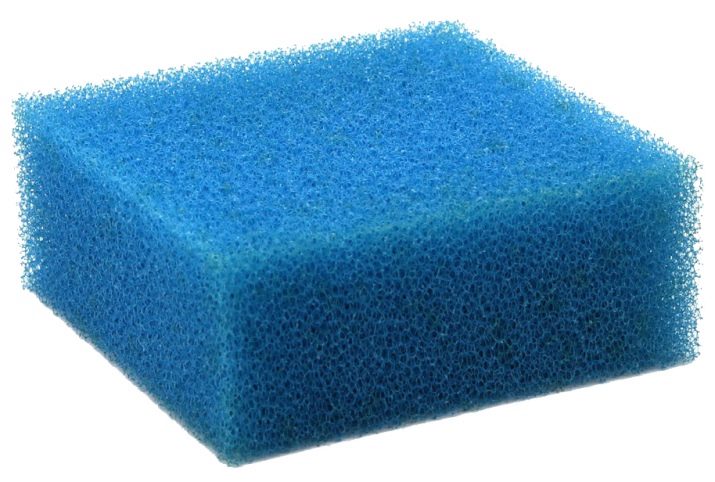
- Bioceramics. Its layer is the main in external biofilters. Microorganisms multiply rapidly on its surface, passing a large stream of water.
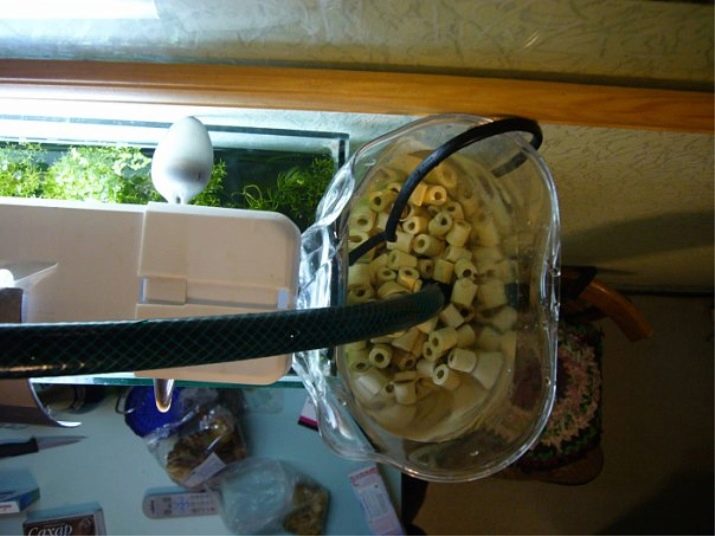
- Porous glass. The latest innovation in the biofiltration market, which has a long service life and good water conductivity. But the high price limits the use for many fans.
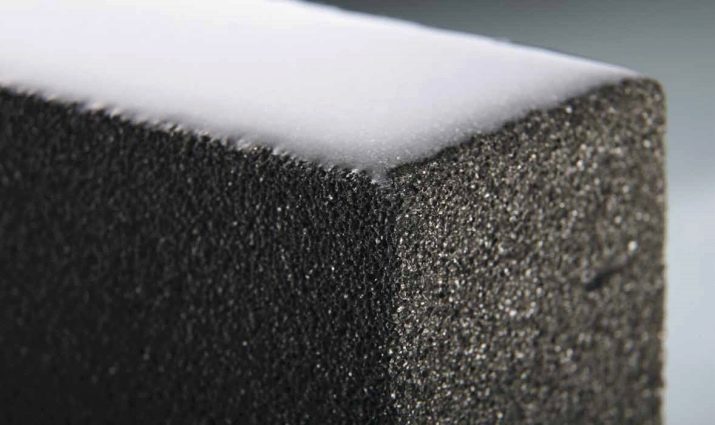
Possible options for filling the biofilter are expanded clay, plastic balls and zeolite. In each case, the material is selected individually, which is explained by the different volume of aquariums, the number of fish and plants.
Rules of operation and care
In order to get the maximum return from ammonia from a new biofilter, a number of conditions must be observed:
- the first week to add live bacteria into the container in the form of a concentrated solution from Sera Nitrivec and Denitrol;
- ensure the constant operation of the aerator;
- Do not overfeed the fish so that the remains of the feed do not accumulate at the bottom;
- regularly measure the temperature of the water and its acidity.
The biofilter must be washed as it becomes dirty. The compartment and colony material is washed under running water without the use of antiseptics or detergents.
Additionally, the pump and tubes are cleaned of dirt, after which the bacteria are repopulated and continue to operate.
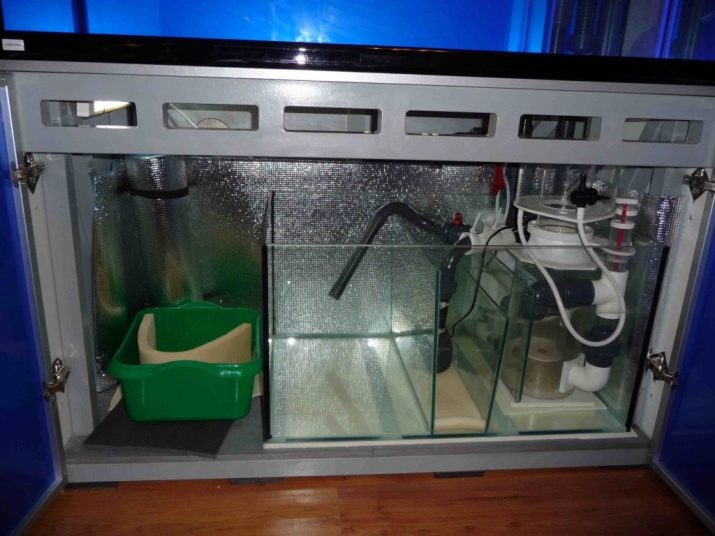
About the biofilter for the aquarium, see below.
